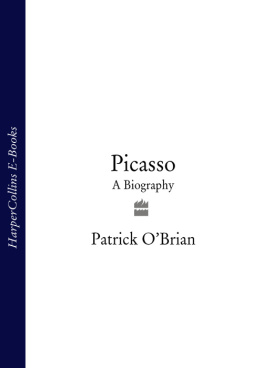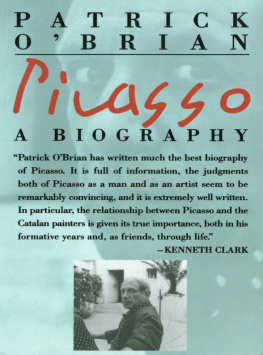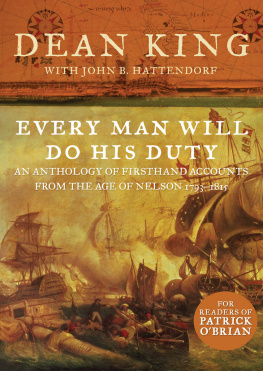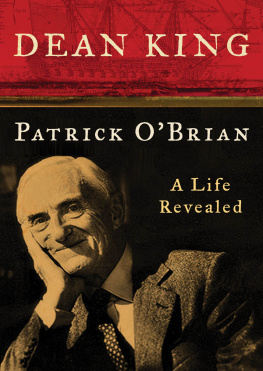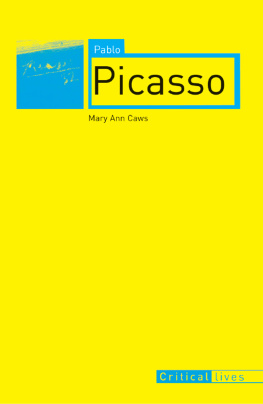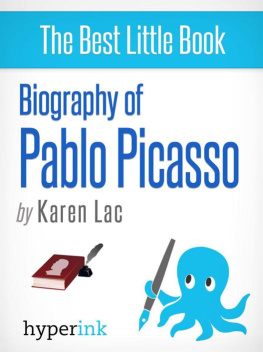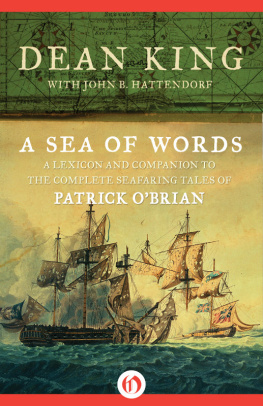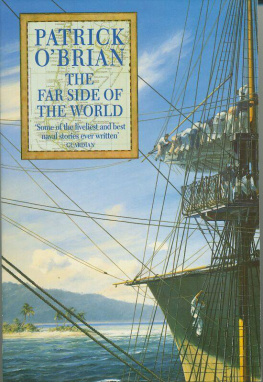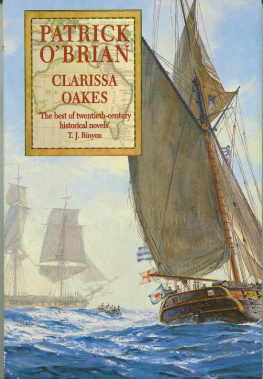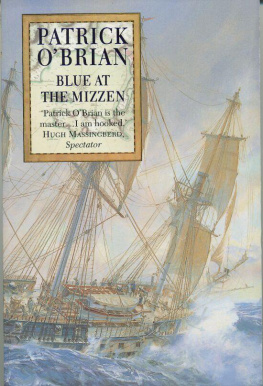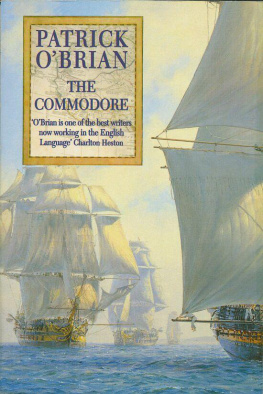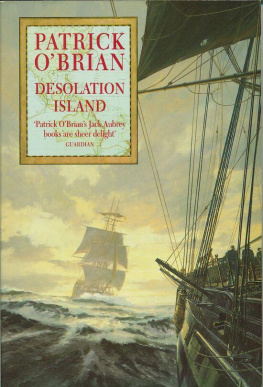OBrian Patrick - PICASSO: A Biography
Here you can read online OBrian Patrick - PICASSO: A Biography full text of the book (entire story) in english for free. Download pdf and epub, get meaning, cover and reviews about this ebook. City: Spain, year: 2003, publisher: HarperCollins Publishers, genre: Detective and thriller. Description of the work, (preface) as well as reviews are available. Best literature library LitArk.com created for fans of good reading and offers a wide selection of genres:
Romance novel
Science fiction
Adventure
Detective
Science
History
Home and family
Prose
Art
Politics
Computer
Non-fiction
Religion
Business
Children
Humor
Choose a favorite category and find really read worthwhile books. Enjoy immersion in the world of imagination, feel the emotions of the characters or learn something new for yourself, make an fascinating discovery.
- Book:PICASSO: A Biography
- Author:
- Publisher:HarperCollins Publishers
- Genre:
- Year:2003
- City:Spain
- Rating:4 / 5
- Favourites:Add to favourites
- Your mark:
- 80
- 1
- 2
- 3
- 4
- 5
PICASSO: A Biography: summary, description and annotation
We offer to read an annotation, description, summary or preface (depends on what the author of the book "PICASSO: A Biography" wrote himself). If you haven't found the necessary information about the book — write in the comments, we will try to find it.
PICASSO: A Biography — read online for free the complete book (whole text) full work
Below is the text of the book, divided by pages. System saving the place of the last page read, allows you to conveniently read the book "PICASSO: A Biography" online for free, without having to search again every time where you left off. Put a bookmark, and you can go to the page where you finished reading at any time.
Font size:
Interval:
Bookmark:



Coadjutorici amoenissimae Mariae do dedico
S INCE this life of Picasso was written several other books have appeared, some on particular aspects of his work, some on the artist as a man; but none has raised such an outcry as Arianna Stassinopoulos Huffingtons Picasso, Creator and Destroyer (Weidenfeld and Nicolson 1988), nor has any been more strongly condemned since Franoise Gilot published her Life with Picasso in 1964.
For my part I felt the general indignation very strongly and I had hoped that the timely re-issue of this book would allow me to utter a counterblast to Huffington in the form of a preface. I wrote one with some care, and Tom Phillips, who felt even more indignant if possible, very kindly said that I might use his much-admired review in The Independent, a strongly-worded criticism in which he, as a painter, dealt with some points far better than I could. Altogether it was, I thought, a good foreword, a thorough-going, heartfelt counterblast. But as a matter of routine my publishers showed it to their lawyer for a libel-report and to our astonishment he said it was actionable.
It was actionable because I too had written a book on Picasso and therefore I could be looked upon as Huffingtons trade-rival, a rival actuated not by honestly-held beliefs but by sordid malice. If I had produced a book on white mice it would have been actionable if I had said that another book on white mice was ill-informed, ill-written and ill-natured. And in this case, believe it or not, it was also dangerous to quote from Tom Phillips review, thus giving it a more lasting form than it had in a newspaper.
That, according to the companys expert, is the state of the English law; and since Coke defines law as the perfection of reason, one can but bow with all the respect due to perfection, whatever shape it may assume.
P ATRICK OB RIAN
1989
T HIS B OOK is an attempt at presenting Picasso whole, the man as well as his art; and its title is designed to emphasize the importance of those years of his life when he was Pablo Ruiz, his childhood in Mlaga and La Corua, and above all his adolescence in Barcelona. They shaped him forever; and since the enormous body of his work cannot be fully appreciated without a knowledge of its Spanish, and even more of its Catalan foundations, the early chapters go deep into his family background and his formative years, drawing on the immense collections of early works and documents that he presented to the Museo Picasso in Barcelona in 1970 and on many Catalan texts.
Art-historians have sometimes divided Picasso the painter, sculptor, draughtsman, lithographer, engraver, and potter from Picasso the man, and for their purpose no doubt the method answers; other writers have spoken of Picasso as though he were only incidentally an artist, concentrating upon the man as he was to be seen away from his easel. The present book aims at striking the mean between these two extremes and at showing a man who, though wholly devoted to his art, spending the most significant and perhaps even the greatest part of his life in his studio, nevertheless lived intensely outside it: yet it does not stray far into the field of criticism, analysis, or interpretation.
There are several reasons for this, and the first is that Braque was surely right in saying that the only important thing in art is that which cannot be explained. Then, while detailed analysis and technical description certainly have their value, they would be out of place in a book that is intended for the intelligent but unspecialized reader. And as for interpretation, that source of so many books about Picasso, it seems to me of value only when the author is a man as interesting as his subject. In the course of my reading I have necessarily waded through thick clouds of interpretative Teutonic metaphysics and a great deal of homespun psychology; but few of the writers came anywhere near this standard and little of what they wrote shed much light on Picasso. What I have done, therefore, when I come to an important picture, is to describe it as accurately as I can, without obtruding any attempt at explanation on the reader, still less telling him what he ought to think. Then I say something about its impact on me; and when, as it sometimes happens, this differs from the generally accepted view, I give that view as well: it is only for the very early or the very late work, where there is as yet no consensus, that I offer my own opinion and little more.
Since this is not a book for specialists I have not encumbered it with notes and references, nor with a bibliography. Indeed, the formal bibliography, referring the reader to books long out of print and to articles published in obscure journals fifty years ago, seems a show of erudition of little use to the general reader when it is genuine and ridiculous when it is false: many that I have seen give what they call the first newspaper criticism, an article by Rodrguez Codol entitled Exposicin Ruiz Picasso and published in La Vanguardia of Barcelona in 1897. But as Juan Antonio Gaya Nuo has shown in his Bibliografia crtica y antolgica the article does not exist: nor did the exhibition.
Apart from the many learned and sometimes illuminating monographs on various aspects of his art, there are of course valuable works among the great number that have been written about Picasso; and no one interested in him can fail to find instruction in Barr or delight in Sabarts, Brassa, Penrose, Fernande Olivier, Genevive Laporte, and some others. Yet it seems to me more useful to speak of them in some detail in the course of the book rather than giving a bald list of all the authors I have read.
But although I give no bibliography, it would be the basest ingratitude if I were not to acknowledge the great kindness and help I have received from Monsieur and Madame Pierre de Saint-Prix, and from many of the friends I have had the honor of sharing with Picasso. Most are mentioned in the text, but there are others whom I must beg to accept my thanks in this place, particularly Madame Marguerite Matisse-Duthuit, the Comte and Comtesse de Lazerme, Seor Maurizio Torra-Balari, and Monsieur Jean Hugo. And I should like to express my gratitude to Seorita Mara Teresa Ocaa of the Museo Picasso in Barcelona, to the kind people at the Museum of Modern Art in New York, the Barnes Foundation at Merton, Pennsylvania, the Pushkin Museum in Moscow, the Louvre, the Bibliothque nationale, and the Muse national dArt moderne, who have been so very helpful and cooperative.
P ICASSO was born on October 25, 1881, in Mlaga, the first, the only son of Doa Mara Picasso y Lopez and her husband, Don Jos Ruiz y Blasco, a painter, a teacher in the citys art school, and the curator of the local museum. The statement is true: it is to be found in all the reference-books. But perhaps it does not convey a great deal of information except to those Spaniards who can as easily visualize the Mlaga of Alphonso XIIs time as English-speaking readers can the St. Louis of President Arthurs or the Southampton of Queen Victoriasto those who know the economic, cultural, and social position of a middle-class family in that town and the pattern of life in nineteenth-century Andaluca as a whole. For even the strongest individual is indelibly marked by the culture in which he is brought up; even the loneliest man is not an island; and even Picasso carried his cradle with him to the grave. A man belongs to his own country forever, he said.
Font size:
Interval:
Bookmark:
Similar books «PICASSO: A Biography»
Look at similar books to PICASSO: A Biography. We have selected literature similar in name and meaning in the hope of providing readers with more options to find new, interesting, not yet read works.
Discussion, reviews of the book PICASSO: A Biography and just readers' own opinions. Leave your comments, write what you think about the work, its meaning or the main characters. Specify what exactly you liked and what you didn't like, and why you think so.

